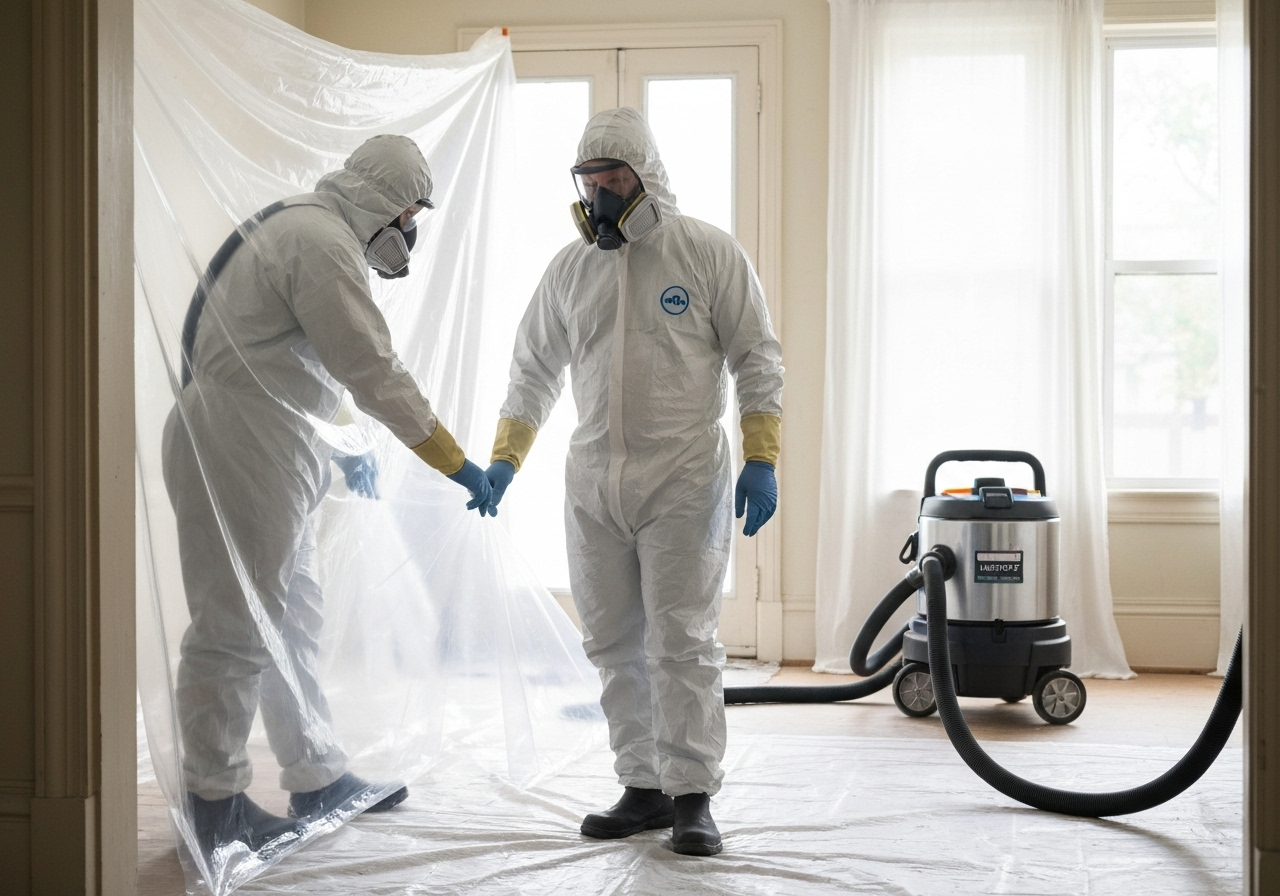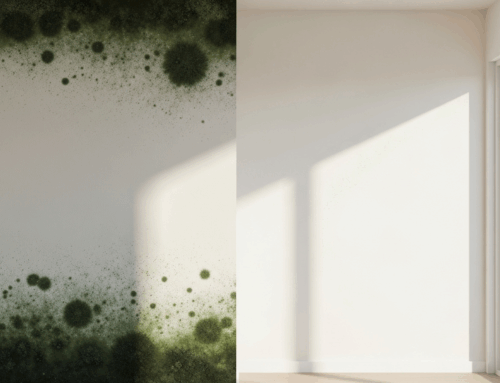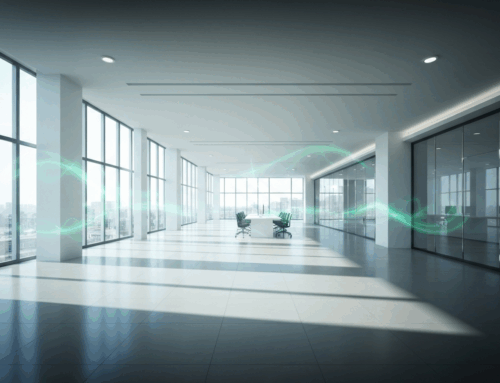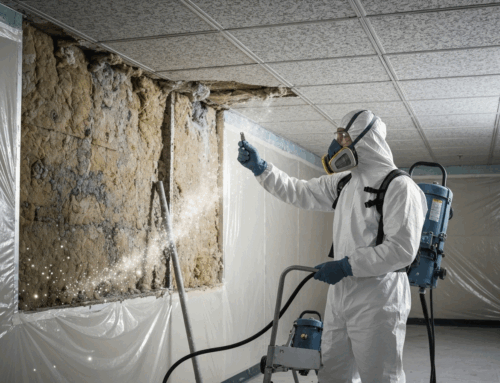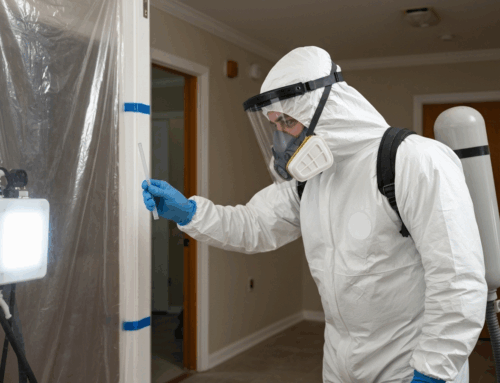Navigating Safe Renovations: Understanding Lead Hazards
For many property owners in South Carolina and North Carolina, the dream of renovation can quickly become a complex challenge, especially when dealing with older structures. Homes built before 1978 often harbor a significant, unseen danger: lead-based paint. When disturbed during renovation, repair, or painting activities, this paint can release microscopic lead dust particles into the air. Inhaling or ingesting lead dust poses severe health risks, particularly to young children, leading to developmental delays, neurological damage, and other serious health issues. Understanding these hazards is the first crucial step in ensuring a safe renovation project and protecting the health of occupants. The Environmental Protection Agency (EPA) established the Lead Renovation, Repair and Painting Program (RRP) to address these dangers, mandating lead-safe work practices for professionals. For comprehensive hazardous material assessment and removal, including lead, Piedmont Quality Air offers expert demolition, asbestos, mold, and lead removal services for safer SC properties.
What is the Lead Renovation, Repair and Painting Program?
The Lead Renovation, Repair and Painting Program (RRP) is a federal regulation enforced by the U.S. Environmental Protection Agency (EPA) aimed at protecting the public from lead-based paint hazards associated with renovation, repair, and painting activities. Enacted under the Toxic Substances Control Act (TSCA), the RRP Rule requires that firms performing renovations in “target housing” (most housing built before 1978) and child-occupied facilities (such as schools and daycare centers) be certified by the EPA or an authorized state program. Furthermore, these firms must use certified renovators who follow specific lead-safe work practices. The rule covers a wide range of activities, from minor repairs that disturb painted surfaces to full-scale remodels. Its primary objective is to minimize the generation and spread of hazardous lead dust during these projects, thereby safeguarding occupants and workers from lead exposure. You can find detailed information about the rule and its requirements on the EPA’s official RRP program page.
The Critical Importance of Lead-Safe Work Practices During Renovation
Lead-safe work practices are the cornerstone of the Lead Renovation, Repair and Painting Program. These practices are meticulously designed to contain lead dust and debris, prevent its spread, and ensure thorough cleanup, thereby minimizing the risk of lead exposure. Even seemingly minor tasks, like sanding a window or scraping paint, can generate dangerous levels of lead dust if not performed correctly. A critical real-world lesson often overlooked by others is that even with increased awareness, studies have shown that children residing in homes undergoing renovations are more susceptible to elevated blood lead levels if lead-safe practices are not rigorously followed. This underscores the necessity of professional adherence, as untrained individuals might inadvertently worsen the hazard. Key lead-safe work practices include:
- Containment: Sealing off the work area with plastic sheeting and warning signs to prevent dust from escaping.
- Dust Control: Using wet sanding, wet scraping, and HEPA-filtered vacuums to minimize airborne dust.
- Worker Protection: Ensuring renovators wear appropriate personal protective equipment (PPE), including respirators.
- Waste Management: Properly collecting, packaging, and disposing of lead-contaminated debris.
- Thorough Cleanup: Meticulous cleaning of the work area after the renovation is complete, often followed by clearance testing.
Adhering to these practices is not just about compliance; it’s about actively protecting human health, especially the most vulnerable. The EPA provides comprehensive guidance on these essential work practices.
Who Must Comply? Homeowners, Contractors, and Property Managers in SC & NC
The Lead Renovation, Repair and Painting Program casts a wide net, impacting various stakeholders involved in renovation activities. For any renovation, repair, or painting project that disturbs lead-based paint in pre-1978 housing or child-occupied facilities, compliance is mandatory. This primarily includes:
- Contractors: General contractors, painters, plumbers, electricians, and other specialty trades who perform work for compensation must be EPA-certified and use lead-safe work practices. The EPA details specific requirements for contractors.
- Property Managers: Those who manage rental properties built before 1978 are also responsible for ensuring that any renovation work adheres to RRP standards. The EPA offers resources for property managers on their compliance obligations.
- Homeowners: While homeowners performing DIY renovations on their primary residence are generally exempt from the certification requirements, they are still strongly encouraged to follow lead-safe practices to protect their families. The EPA provides guidance for DIYers to ensure lead safety.
In states like North Carolina, the Department of Health and Human Services also provides information and guidance on the RRP Rule, underscoring the collaborative effort to ensure lead safety in local communities. For example, North Carolina’s Department of Public Health offers insights on their lead renovation, repair, and painting program. An expert insight to add for authority is that professional certification is not merely a legal requirement; it represents a commitment to a higher standard of safety that untrained individuals simply cannot replicate. Certified professionals undergo rigorous training that covers not only the technical aspects of lead-safe work but also the critical nuances of risk assessment and prevention.
Key Requirements and Certification for the Lead Renovation, Repair and Painting Program
To ensure compliance with the Lead Renovation, Repair and Painting Program, firms and individuals must meet specific training and certification requirements. This structured approach ensures that only qualified professionals handle lead-based paint hazards. The key requirements include:
- Firm Certification: Any company that performs renovation, repair, or painting work in target housing or child-occupied facilities must be certified by the EPA or an authorized state program. This involves submitting an application and paying a fee. Information on RRP firm certification is available through the EPA.
- Certified Renovator Training: Firms must ensure that all renovation projects are supervised by a Certified Renovator. To become a Certified Renovator, individuals must complete an EPA-approved training course. This 8-hour course covers lead-safe work practices, regulatory requirements, and proper documentation. Refresher courses are required every five years. The EPA provides details on renovator training.
- Pre-Renovation Education: Before starting any work, certified firms are required to provide occupants of target housing with the EPA’s “Renovate Right” pamphlet, which informs them about lead-based paint hazards and lead-safe renovation practices.
- Record Keeping: Certified firms must maintain records documenting compliance with the RRP Rule, including training certificates, lead-safe work practice checklists, and pre-renovation notification documentation.
The RRP Rule has undergone several amendments since its publication in the Federal Register in 2008, reflecting ongoing efforts to refine and strengthen lead hazard reduction policies. For a deeper understanding of the rule’s evolution and resources, the National Center for Healthy Housing provides an overview of the EPA’s Renovation, Repair, and Painting Rule.
Piedmont Quality Air: Your Partner for RRP Compliance and a Lead-Safe Environment
Navigating the stringent requirements of the Lead Renovation, Repair and Painting Program demands specialized expertise and a commitment to safety. Piedmont Quality Air stands as a trusted partner for property owners and managers in South Carolina and North Carolina, offering comprehensive services that ensure full compliance and a lead-safe environment. Our team of experienced and trained professionals is well-versed in federal and state regulations concerning hazardous materials, including lead-based paint. We understand that effective lead management goes beyond simple paint removal; it requires meticulous planning, precise execution of lead-safe work practices, and thorough post-project verification.
Our capabilities align directly with the core objectives of the RRP Rule. Whether your project involves interior demolition, renovation, or painting in an older property, we prioritize identifying and safely addressing potential lead hazards from the outset. Our services ensure that all work is conducted in a controlled manner, minimizing lead dust generation and preventing its spread. This includes proper containment, use of HEPA-filtered equipment, and responsible disposal of lead-contaminated waste. Our extensive experience in hazardous material abatement, including asbestos and mold, provides us with a foundational understanding of critical safety protocols and environmental protection. This makes us uniquely equipped to handle the complexities of lead-safe renovations. For a broader look at our capabilities in creating safer properties, explore Piedmont Quality Air’s expert demolition, asbestos, mold, and lead removal services. The most convincing evidence for our credibility lies in our proven track record of upholding the highest safety standards across various hazardous material projects, demonstrating our unwavering commitment to client well-being and regulatory compliance.
Preparing Your Property for a Lead-Safe Renovation: A Checklist
Undertaking a renovation project in a home built before 1978 requires careful planning to ensure it adheres to the Lead Renovation, Repair and Painting Program and remains lead-safe. A proactive approach is essential for protecting your family, workers, and the environment. Here’s a checklist to guide you through preparing your property for a lead-safe renovation:
- Test for Lead-Based Paint: Before any work begins, arrange for a certified lead inspector to test all painted surfaces that will be disturbed. This will confirm the presence and location of lead-based paint.
- Hire a Lead-Safe Certified Firm: Ensure that any contractor you hire is an EPA Lead-Safe Certified Firm and employs Certified Renovators. Ask for proof of their certification.
- Understand the Scope: Discuss the project thoroughly with your contractor, ensuring they understand their responsibilities under the RRP Rule.
- Provide Pre-Renovation Education: If you are the property owner, ensure your contractor provides all occupants with the “Renovate Right” pamphlet and obtains acknowledgment of receipt.
- Plan for Occupant Protection: If residents will remain in the home during renovation, discuss how the work area will be isolated and how daily cleanup will occur to protect them from lead dust. Consider temporary relocation if possible for extensive projects.
- Clear the Work Area: Remove all movable furniture, rugs, and personal belongings from the work area. Cover anything that cannot be removed with plastic sheeting.
- Secure HVAC Systems: Turn off and seal off forced-air heating and air conditioning systems to prevent the spread of lead dust through ducts.
- Prepare Exterior Areas: If exterior work is planned, clear plants and outdoor furniture from the work area and cover the ground with plastic sheeting to collect debris.
- Discuss Waste Disposal: Confirm with your contractor how lead-contaminated waste will be collected, sealed, and disposed of according to regulations.
Integrating these steps into your renovation plan, alongside essential building inspections in South Carolina that include hazardous material assessments, provides a robust framework for a safe and compliant project.
Beyond RRP: Ensuring Long-Term Health and Safety Post-Renovation
While compliance with the Lead Renovation, Repair and Painting Program is a critical first step for lead-safe renovations, ensuring long-term health and safety extends beyond the completion of the project. A truly definitive guide emphasizes not just initial compliance, but the ongoing stewardship required to maintain a truly healthy home, viewing RRP as a critical foundational layer. Even after meticulous lead-safe practices and thorough cleanup, persistent vigilance is necessary to prevent future lead exposure and maintain overall indoor air quality.
Key considerations for post-renovation health and safety include:
- Post-Renovation Clearance: For certain projects, independent clearance testing by a certified risk assessor or lead inspector is required. This involves collecting dust wipe samples to confirm that lead dust levels are below federal and state standards, ensuring the area is safe for re-occupancy.
- Ongoing Maintenance: Regularly inspect painted surfaces for deterioration, especially in high-friction areas like windows and doors. Address any chipping or peeling paint promptly using lead-safe practices.
- Dust Control Practices: Maintain a clean home by regularly wet-wiping surfaces and wet-mopping floors with all-purpose cleaners to minimize dust accumulation, regardless of lead paint presence. Use HEPA-filtered vacuums when possible.
- Hand Washing: Encourage frequent hand washing for children and adults, especially before eating, to prevent incidental ingestion of lead dust.
- Monitoring Indoor Air Quality: Beyond lead, monitor for other indoor air quality concerns, particularly after renovations that may have disturbed mold or asbestos. Post-demolition air quality testing in South Carolina can confirm that no other hazardous particles linger.
- Educate Occupants: Continue to educate all household members about lead hazards and safe practices.
By implementing these ongoing measures, property owners can build upon the foundation of RRP compliance to create and maintain an environment that prioritizes the long-term health and well-being of all occupants.

